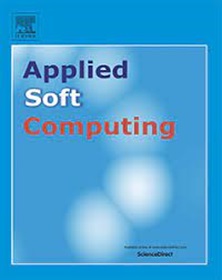A reinforcement learning hyper-heuristic algorithm for the distributed flowshops scheduling problem under consideration of emergency order insertion
IF 7.2
1区 计算机科学
Q1 COMPUTER SCIENCE, ARTIFICIAL INTELLIGENCE
引用次数: 0
Abstract
Large enterprises are composed of several subproduction centers. The production plan is changed based on the procedure of the manufacturing system. The distributed flowshop scheduling problem under consideration of emergence order insertion is challenging as the assignment of the product, and the scheduling of the process are coupled with each other. A general distributed flow shop scheduling problem regarding emergency order insertion (DFSP_EOI) is addressed under rescheduling circumstances in this paper. The Q-learning hyper-heuristic algorithm with dynamic insertion rule (QLHH_DIR) is proposed to solve the DFSP_EOI. Eight low-level heuristics (LLHs) for static job assignment. A dynamic insertion rule based on the state of each production center is designed for emergency order insertion. The Q-learning mechanism at high-level space selects appropriate LLH through learning the experience from the optimization process. The computational simulation is carried out, and the results confirm that the proposed algorithm is superior to the competitors in solving the distributed flow shop rescheduling problem. The results of the 720 problem instances show that the proposed algorithm is highly efficient in rescheduling problems.
考虑紧急订单插入的分布式流程车间调度问题的强化学习超启发式算法
大型企业由多个分生产中心组成。生产计划会根据制造系统的流程而改变。由于产品分配和流程调度相互耦合,因此考虑紧急订单插入的分布式流程车间调度问题具有挑战性。本文探讨了在重新调度情况下,关于紧急订单插入的一般分布式流程车间调度问题(DFSP_EOI)。本文提出了具有动态插入规则的 Q-learning 超启发式算法(QLHH_DIR)来解决 DFSP_EOI。八种用于静态作业分配的低级启发式算法(LLH)。为紧急订单插入设计了基于各生产中心状态的动态插入规则。高层空间的 Q-learning 机制通过学习优化过程的经验来选择合适的 LLH。计算仿真结果表明,所提出的算法在解决分布式流水车间重新安排问题时优于竞争对手。720 个问题实例的结果表明,所提出的算法在重新安排问题上具有很高的效率。
本文章由计算机程序翻译,如有差异,请以英文原文为准。
求助全文
约1分钟内获得全文
求助全文
来源期刊

Applied Soft Computing
工程技术-计算机:跨学科应用
CiteScore
15.80
自引率
6.90%
发文量
874
审稿时长
10.9 months
期刊介绍:
Applied Soft Computing is an international journal promoting an integrated view of soft computing to solve real life problems.The focus is to publish the highest quality research in application and convergence of the areas of Fuzzy Logic, Neural Networks, Evolutionary Computing, Rough Sets and other similar techniques to address real world complexities.
Applied Soft Computing is a rolling publication: articles are published as soon as the editor-in-chief has accepted them. Therefore, the web site will continuously be updated with new articles and the publication time will be short.
 求助内容:
求助内容: 应助结果提醒方式:
应助结果提醒方式:


